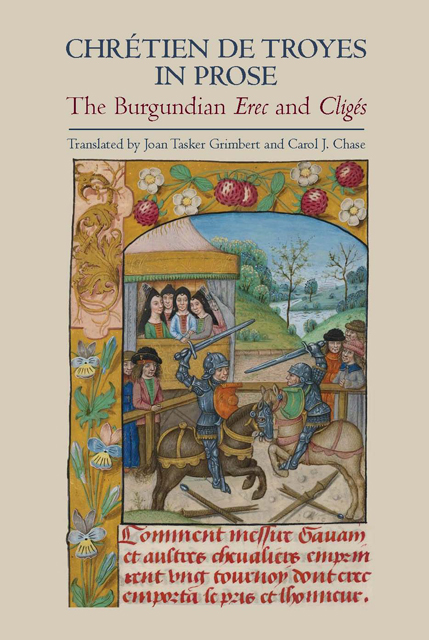Introduction
Published online by Cambridge University Press: 14 February 2023
Summary
From Chrétien de Troyes to the court of Philip the Good: from verse to prose
In the late twelfth century, Chrétien de Troyes composed several Arthurian romances of such quality and influence that he is considered the creator of that genre: Erec et Enide, Cligés, Le Chevalier de la charrrette (Lancelot), Le Chevalier au lion (Yvain), and Le Conte du Graal (Le Roman de Perceval). Like most writers of this period, Chrétien composed his romances in verse; his last work, Le Conte du Graal, which breaks off in the middle of an episode, was provided with four verse continuations, all of which date to the thirteenth century and were designed to bring closure to the tale. While authors continued to write in verse from the thirteenth century on, prose became more and more the medium of choice for narrative works, owing in part to the influence of the numerous chronicles and to the feeling that prose conveyed a greater sense of veracity than verse.
Chrétien’s romances survive in manuscripts prepared mostly in the thirteenth and fourteenth centuries; his Chevalier de la charrette, rendered into prose, was adapted to fit into the enormously popular Lancelot, part of the Lancelot-Grail Cycle. This five-part Cycle, written in the first part of the thirteenth century, also develops material about the Grail that Chrétien had included in his Conte du Graal. Part of Chrétien’s legacy was thus transformed early on in order to respond to the needs of a new public. His verse works coexisted with the increasingly popular prose romances. But by the fifteenth century, Chrétien’s Old French verse was no longer being copied, and because the language had evolved to the stage that linguists call Middle French, scholars have assumed that readers who were still interested in his romances must have found them difficult to decipher. Indeed, the evolution of the language is one of the reasons cited for the appearance in this late medieval period of prose transcriptions of some of Chrétien’s works. Recently, however, Maria Colombo Timelli has nuanced this judgment. Her research suggests that the authors of mid-fifteenth-century prose renditions – more focused on the work of converting verse to prose – did not perceive a significant difference between the language of their models and their own; this awareness emerged later, after the turn of the sixteenth century.
- Type
- Chapter
- Information
- Chrétien de Troyes in ProseThe Burgundian <i>Erec</i> and <i>Cligés</i>, pp. 1 - 18Publisher: Boydell & BrewerPrint publication year: 2011



